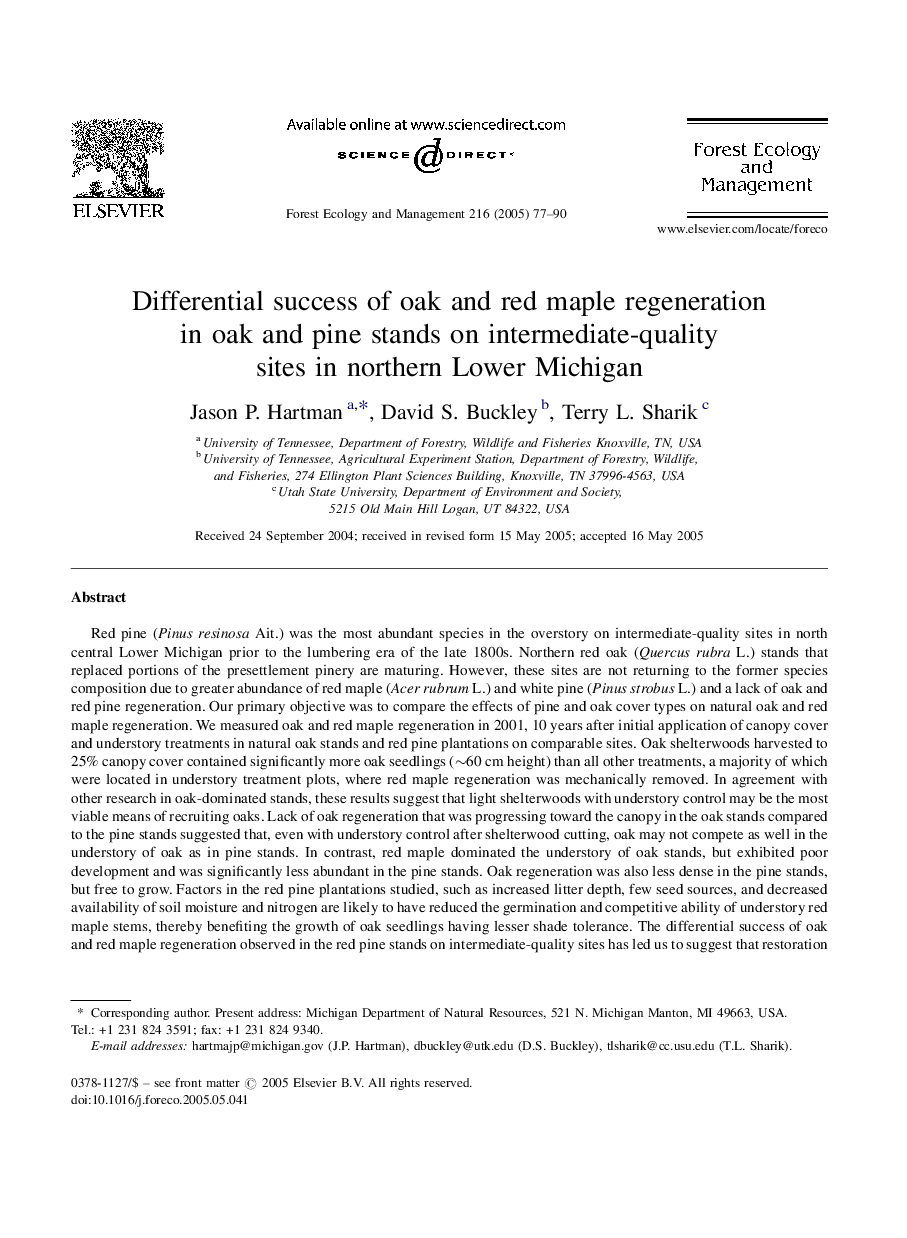| Article ID | Journal | Published Year | Pages | File Type |
|---|---|---|---|---|
| 9620170 | Forest Ecology and Management | 2005 | 14 Pages |
Abstract
Red pine (Pinus resinosa Ait.) was the most abundant species in the overstory on intermediate-quality sites in north central Lower Michigan prior to the lumbering era of the late 1800s. Northern red oak (Quercus rubra L.) stands that replaced portions of the presettlement pinery are maturing. However, these sites are not returning to the former species composition due to greater abundance of red maple (Acer rubrum L.) and white pine (Pinus strobus L.) and a lack of oak and red pine regeneration. Our primary objective was to compare the effects of pine and oak cover types on natural oak and red maple regeneration. We measured oak and red maple regeneration in 2001, 10 years after initial application of canopy cover and understory treatments in natural oak stands and red pine plantations on comparable sites. Oak shelterwoods harvested to 25% canopy cover contained significantly more oak seedlings (â¼60Â cm height) than all other treatments, a majority of which were located in understory treatment plots, where red maple regeneration was mechanically removed. In agreement with other research in oak-dominated stands, these results suggest that light shelterwoods with understory control may be the most viable means of recruiting oaks. Lack of oak regeneration that was progressing toward the canopy in the oak stands compared to the pine stands suggested that, even with understory control after shelterwood cutting, oak may not compete as well in the understory of oak as in pine stands. In contrast, red maple dominated the understory of oak stands, but exhibited poor development and was significantly less abundant in the pine stands. Oak regeneration was also less dense in the pine stands, but free to grow. Factors in the red pine plantations studied, such as increased litter depth, few seed sources, and decreased availability of soil moisture and nitrogen are likely to have reduced the germination and competitive ability of understory red maple stems, thereby benefiting the growth of oak seedlings having lesser shade tolerance. The differential success of oak and red maple regeneration observed in the red pine stands on intermediate-quality sites has led us to suggest that restoration of beneficial oak and pine interactions and a shift in focus from regenerating oak beneath oak to regenerating oak beneath pine may be warranted.
Related Topics
Life Sciences
Agricultural and Biological Sciences
Ecology, Evolution, Behavior and Systematics
Authors
Jason P. Hartman, David S. Buckley, Terry L. Sharik,
